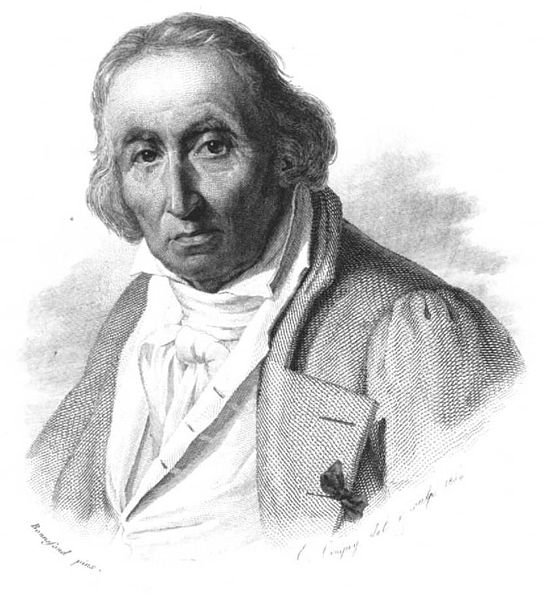Joseph Marie Charles dit Jacquard was a French weaver and merchant. He played an important role in the development of the earliest programmable loom, which in turn played an important role in the development of other programmable machines, such as an early version of digital compiler used by IBM to develop the modern day computer.
Joseph Marie Jacquard
Jacquard loom on display in the Museum of Science and Industry in Manchester, England
The Most Famous Image in the Early History of Computing This portrait of Jacquard was woven in silk on a Jacquard loom and required 24,000 punched cards to create (1839). It was only produced to order. One of these portraits in the possession of Charles Babbage inspired him in using perforated cards in his Analytical Engine. It is in the collection of the Science Museum in London, England.
The Jacquard machine is a device fitted to a loom that simplifies the process of manufacturing textiles with such complex patterns as brocade, damask and matelassé. The resulting ensemble of the loom and Jacquard machine is then called a Jacquard loom. The machine was patented by Joseph Marie Jacquard in 1804, based on earlier inventions by the Frenchmen Basile Bouchon (1725), Jean Baptiste Falcon (1728), and Jacques Vaucanson (1740). The machine was controlled by a "chain of cards"; a number of punched cards laced together into a continuous sequence. Multiple rows of holes were punched on each card, with one complete card corresponding to one row of the design.
This portrait of Jacquard was woven in silk on a Jacquard loom and required 24,000 punched cards to create (1839). It was only produced to order. Charles Babbage owned one of these portraits; it inspired him in using perforated cards in his Analytical Engine. It is in the collection of the Science Museum in London, England.
A Jacquard loom showing information punchcards, National Museum of Scotland
A schematic diagram of the Jacquard system
19th century Engineering drawing of a Jacquard loom






